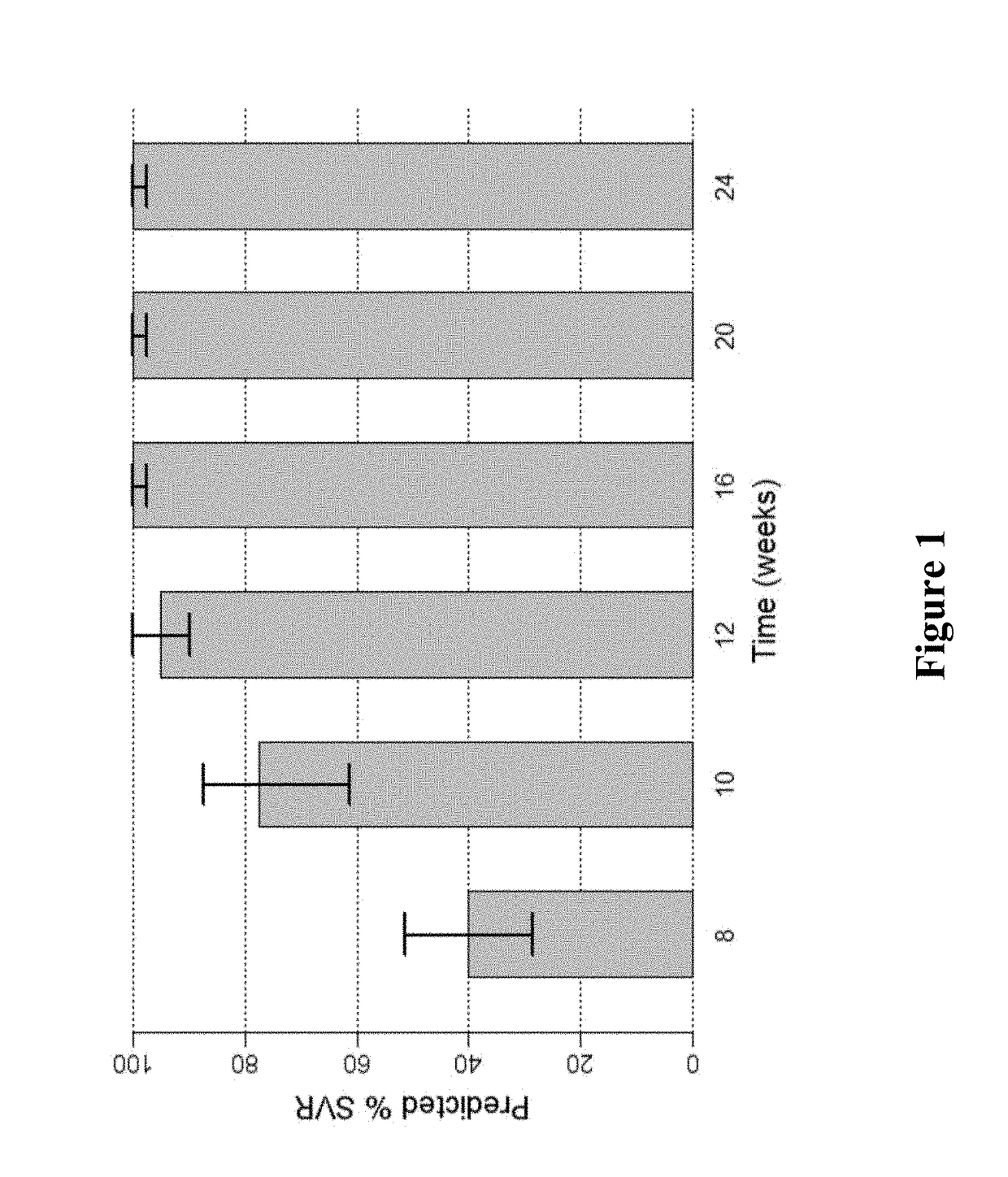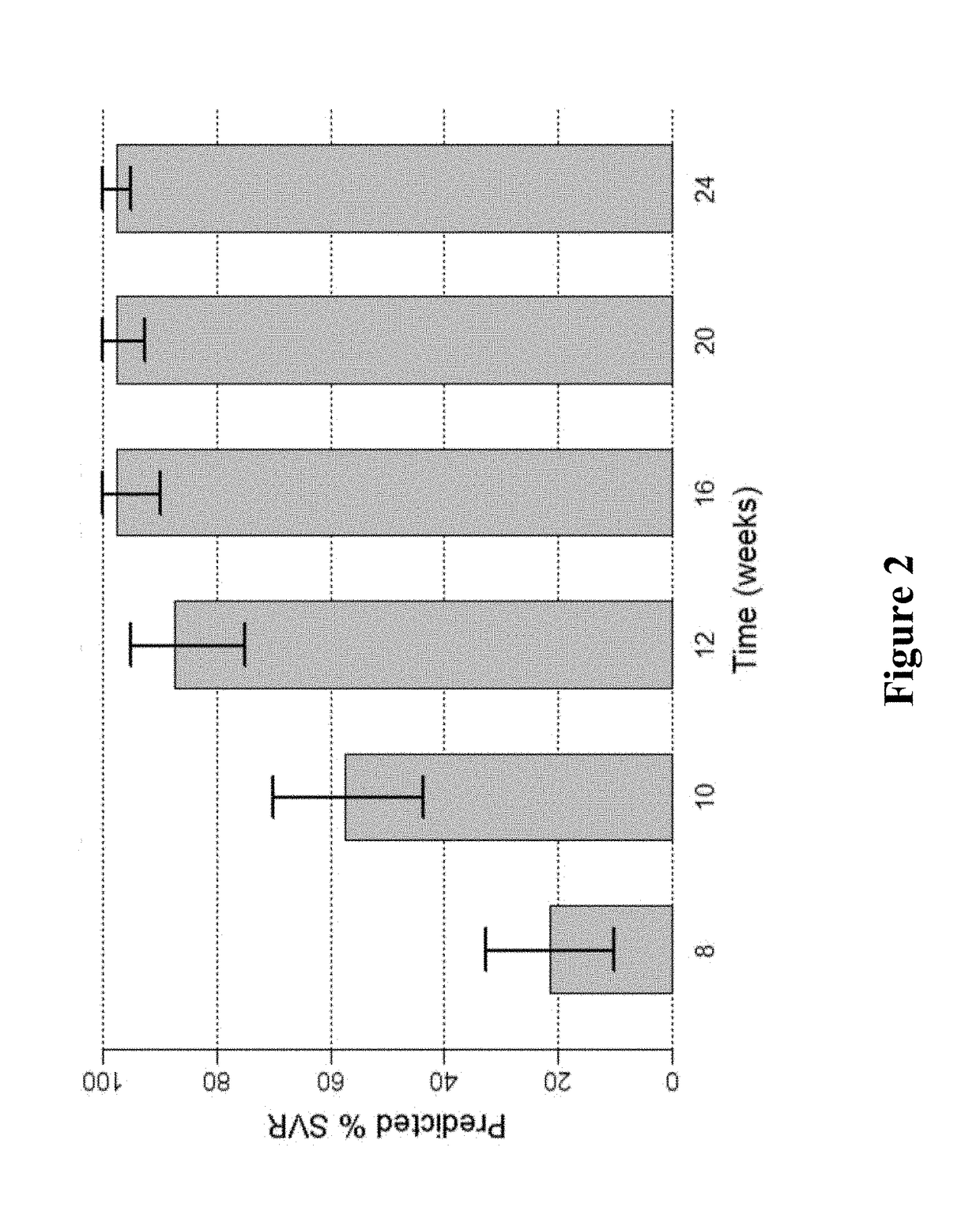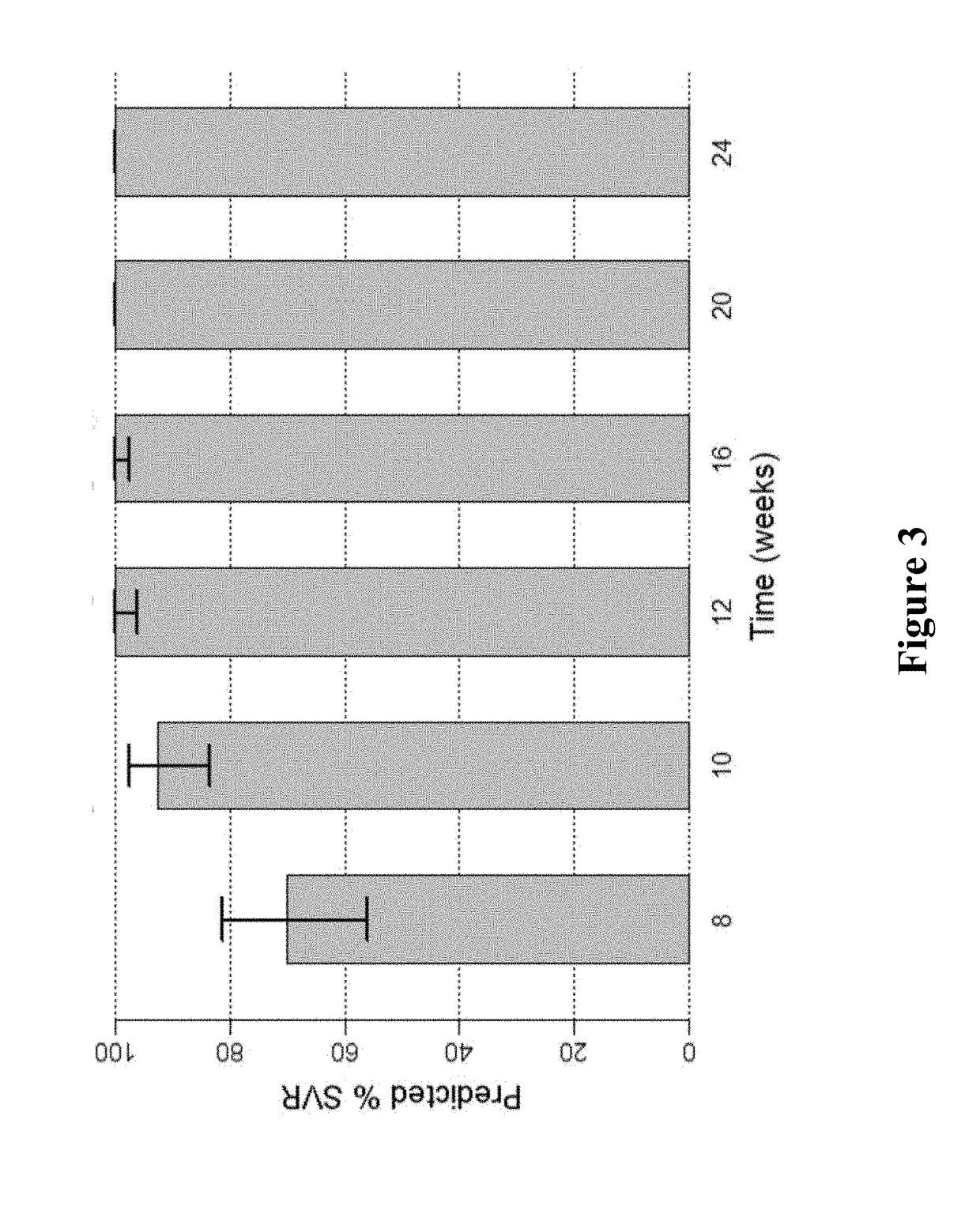Methods for Treating HCV
a technology of hepatitis c virus and interferon, which is applied in the direction of medical preparations, organic active ingredients, pharmaceutical active ingredients, etc., can solve the problems of limited interferon- and ribavirin-free direct-acting antiviral, inability to fully eliminate viral cells from the body, and substantial limitations in efficacy and tolerability, so as to avoid side effects
- Summary
- Abstract
- Description
- Claims
- Application Information
AI Technical Summary
Benefits of technology
Problems solved by technology
Method used
Image
Examples
example 1
Clinical Modeling for Interferon-Free DAA Combination Therapies
[0162]Treatment regimens comprising administration of Compound 1 and Compound 2 were evaluated using clinical models described in U.S. Patent Application Publication No. 2013 / 0102526, filed Oct. 19, 2012 and entitled “Methods for Treating HCV”, which is incorporated herein by reference in its entirety. These treatment regimens comprised administration of Compound 1 and Compound 2, but did not include administration of either interferon or ribavirin. Comparable SVR rates are expected for interferon-non responders.
[0163]FIG. 1 shows the predicted median SVR percentages and 90% SVR confidence intervals for 2-DAA regimens consisting of the use of Compound 1 (400 mg once daily) and Compound 2 (120 mg once daily) to treat genotype 1 naïve subjects. Different treatment durations were assessed. The predicted SVR rate for a 12-week treatment was about 95%. As used in all of the figures of the present application, the vertical bar...
example 2
Combination of Compound 1 and Compound 2 In Vitro
[0171]FIG. 9 shows that the combination of Compound 1 and Compound 2 exhibits significant synergistic effect on HCV inhibition as tested in HCV GT 1b Con-1 replication cells. The result was generated using Prichard and Shipman model (Prichard et al. ANTIVIRAL RESEARCH 14:181-205 (1990)).
[0172]Compound 1 inhibited replication of HCV stable subgenomic replicons containing NS3 genes from GT 1a, 1b, 2a, 3a, 4a, or 6a with EC50 values ranging from 0.85 to 2.8 nM. Of note, Compound 1 was potent against replicon containing GT3a protease, with an EC50 value of 1.6 nM. Compound 1 retained its activity against common GT1a and 1b variants at NS3 amino acid positions 155 and 168 that conferred resistance to other HCV protease inhibitors (Pis). Resistant colony selection studies in GT1a and 1b subgenomic replicon cells identified A156T in GT1a and A156V in GT1b as the most frequent variants, which conferred 1400- and 1800-fold reduced susceptibili...
example 3
High SVR in HCV Genotype 1 (GT1) Non-Cirrhotic Treatment-Naïve Patients or Pegylated Interferon / Ribavirin Null Responders Treated with the Combination of Compound 1 and Compound 2
[0174]Compound 1 and Compound 2 are characterized by potent pangenotypic in vitro antiviral activity against major HCV genotypes (GTs), including activity against key known resistance-associated variants and a high barrier to resistance selection. Monotherapy with Compound 1 or Compound 2 resulted in a mean 4 log10 IU / mL decline from baseline in HCV plasma viral load in GT1-infected subjects with and without compensated cirrhosis.
[0175]In this phase 2 study, treatment with Compound 1 and Compound 2 for 12 weeks is evaluated in HCV GT1-infected subjects without cirrhosis. Non-cirrhotic GT1-infected treatment-naïve (TN) or pegylated interferon / ribavirin (pegIFN / RBV) null responder subjects received once-daily Compound 1 200 mg+Compound 2 120 or 40 mg for 12 weeks, and subsequently were followed for 24 weeks. ...
PUM
| Property | Measurement | Unit |
|---|---|---|
| time | aaaaa | aaaaa |
| time | aaaaa | aaaaa |
| time | aaaaa | aaaaa |
Abstract
Description
Claims
Application Information
 Login to View More
Login to View More - R&D
- Intellectual Property
- Life Sciences
- Materials
- Tech Scout
- Unparalleled Data Quality
- Higher Quality Content
- 60% Fewer Hallucinations
Browse by: Latest US Patents, China's latest patents, Technical Efficacy Thesaurus, Application Domain, Technology Topic, Popular Technical Reports.
© 2025 PatSnap. All rights reserved.Legal|Privacy policy|Modern Slavery Act Transparency Statement|Sitemap|About US| Contact US: help@patsnap.com



